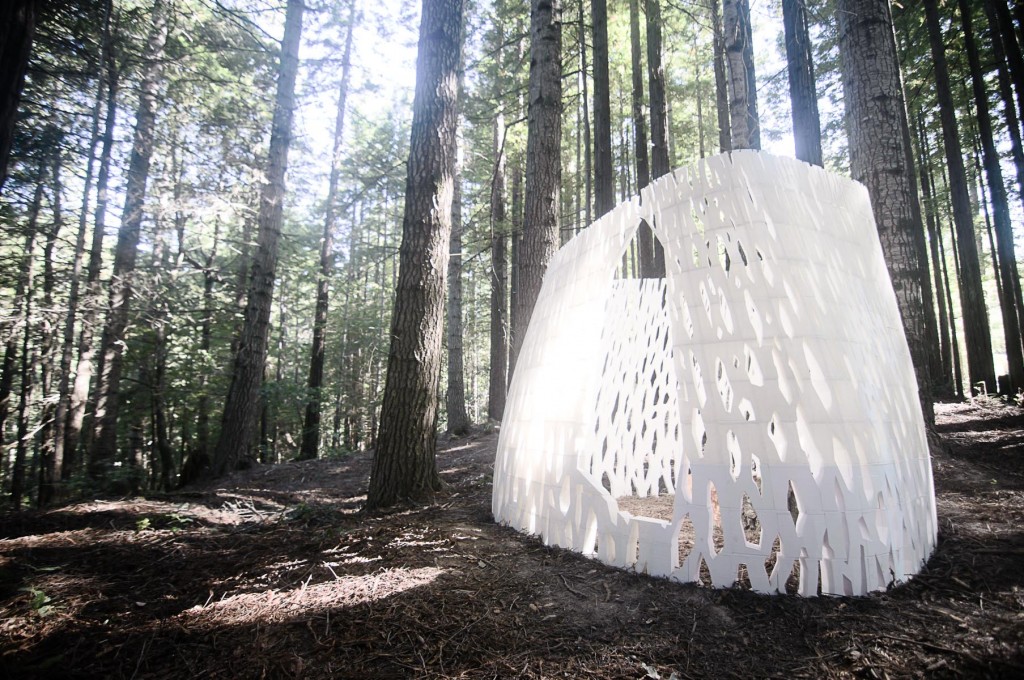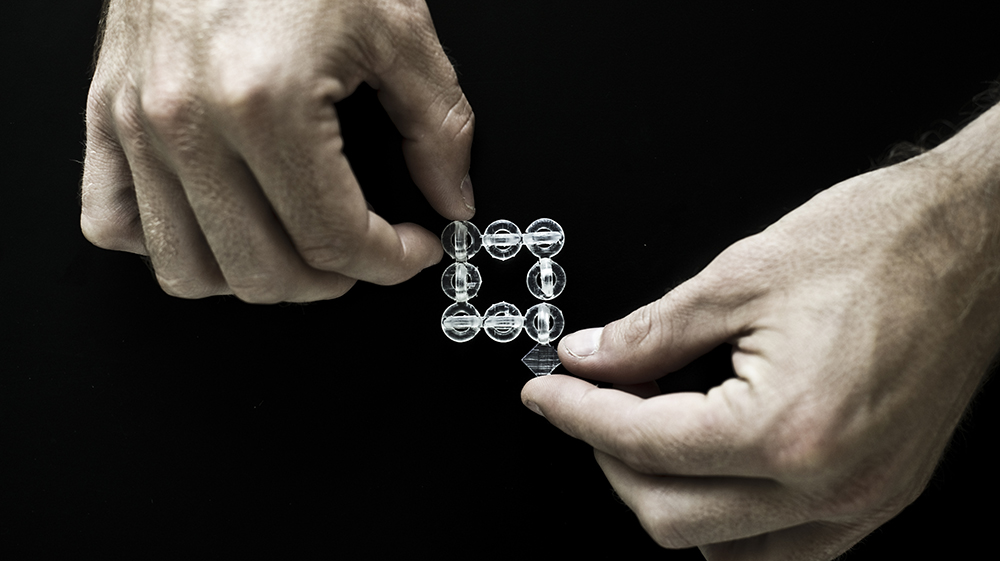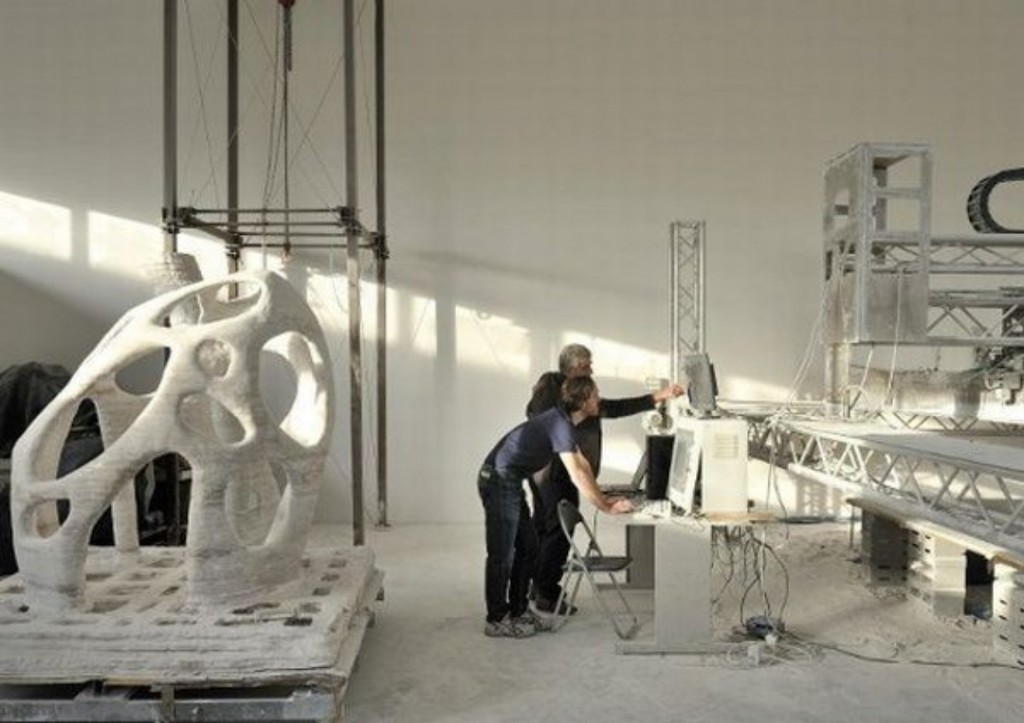Before we go on exploring the possibilities we did some research to find out what others have thus far done with 3D printing on a larger scale. This collaborative duo has created a site responsive, 3D printed architectural installation (the largest of it’s kind): Echoviren.
 These guys took a look at printing on a larger scale in a totally different way.Their project is called Hyperform, and the process transforms CAD models into a series of linear paths that are populated with a chain of virtual rings. Each link in the chain acts like a pixel to help define the form of the model and is customized with a unique notch that allows it to connect to nearby links.
These guys took a look at printing on a larger scale in a totally different way.Their project is called Hyperform, and the process transforms CAD models into a series of linear paths that are populated with a chain of virtual rings. Each link in the chain acts like a pixel to help define the form of the model and is customized with a unique notch that allows it to connect to nearby links.
 Enrico Dini built a new machine that uses stereolithography 3D printing process for making full-size sandstone buildings that requires only sand and our special inorganic binder to operate.
Enrico Dini built a new machine that uses stereolithography 3D printing process for making full-size sandstone buildings that requires only sand and our special inorganic binder to operate.
 And last but not least: the project Kamermaker. Its 3D print technology is based on an enlarged ‘Ultimaker’ 3D printing machine. This machine can print 3D objects using PLA (bio plastics produced from corn). The KamerMaker can print small interiors, measuring up to 2.0m(width) x 2.0m (length) x 3.5m (height).
And last but not least: the project Kamermaker. Its 3D print technology is based on an enlarged ‘Ultimaker’ 3D printing machine. This machine can print 3D objects using PLA (bio plastics produced from corn). The KamerMaker can print small interiors, measuring up to 2.0m(width) x 2.0m (length) x 3.5m (height).
 A lot of possibilities…and we are going to create even more.. We’ll keep you posted!
A lot of possibilities…and we are going to create even more.. We’ll keep you posted!


